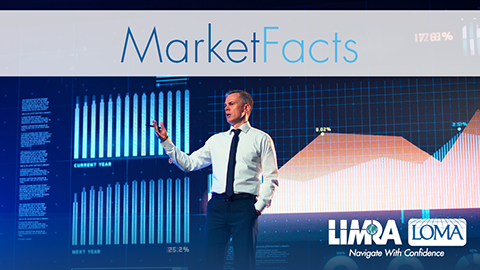Advertorial
Stop Guessing at Risk: Pull Back the Full Curtain

Advertorial
Stop Guessing at Risk: Pull Back the Full Curtain


September 2025
Imagine walking into an ornate theater. On stage, the red brocade curtains are drawn — but there are gaps. Through one, you see a set of upright, pointed white ears. Obviously, an animal of some kind. Then, a tufted, flicking tail appears, indicating a mammal. Another reveals legs and a set of hooves. It appears to be something in the horse family. Then, black and white stripes.
It’s a zebra, right?
Without pulling back the whole curtain, you’re just guessing.
Today, underwriters use many disparate data sources to try to see what’s behind the curtain. That creates several issues:
Underwriters use disparate data sources because historically, there wasn’t a single data source that provided the full picture of risk. But today, electronic health records (EHRs) can help you pull back the curtain and get a more complete picture of risk.
The problem is that many carriers are limiting their use of EHRs to just a static PDF that gets dropped on an underwriter’s desk for manual review.
If that’s how you see EHRs, you’re missing what they’ve become — and what your competitors may already be putting to work. EHRs are a source of comprehensive digital health data. And today, leading solutions can ingest, structure and deliver that intelligence to give you a more complete understanding of risk.
What happens when you stop peeking between gaps and pull back the full curtain? Here’s how structured EHR data can speed up decisions, boost confidence and improve mortality predictions.
Scenario 1: Make faster decisions without additional evidence
Thomas, 45, applies for $750,000 in coverage. He’s a nonsmoker with no disclosed conditions.
Without an EHR, the underwriter flags a diabetes medication in the prescription history. He orders a paramedical exam with a blood draw, stretching out the process by nearly four weeks.
With EHR data available at the time of application, the underwriter would have been able to review labs and vitals, indicating control and management of the impairment. The EHR uncovers that the diabetes is well managed and approves the application for accelerated issue.
Scenario 2: Mitigate misrepresentation
Gina, 48, applies for $250,000 in coverage. She self-reports as a nonsmoker with a body mass index (BMI) of 27, which qualifies for preferred rates.
Without an EHR, Gina’s file passes through automated rules and is approved without underwriter review.
With structured EHR data ingested early, the carrier’s rules engine flags discrepancies. Recent vitals show a BMI of 33.4, and a physician’s note from 18 months ago says, “Advised patient to quit smoking. Continues to smoke one pack per day.” The file is routed for manual review, and the underwriter adjusts the risk class accordingly.
Without that flag, the policy would have been mispriced, setting the stage for an early claim, a post-issue audit and mortality slippage. As smoking and BMI are the two largest sources of misrepresentation, by finding these cases at scale, you can avoid an awkward reinsurance conversation.
Scenario 3: Make more accurate mortality predictions
Jack, 62, applies for $400,000 in coverage. He reports no hypertension and no medications.
Without an EHR, the underwriter pulls prescription history and medical claims and finds no issues. Based on Jack’s self-reported blood pressure of 135/82, the application is approved at preferred rates under accelerated guidelines.
With the EHR data available at application, the carrier’s business rules engine reviews five years of structured vitals. It flags multiple recent blood pressure readings in excess of the carrier’s preferred guidelines. Furthermore, the diagnosis data reveal an ICD (International Classification of Diseases) medical code for hypertension. The case is diverted to manual review, and the underwriter revises the offer to standard in accordance with the condition details in the record.
Without the longitudinal trend data, the policy would have been issued at a preferred rate, leaving the carrier exposed if Jack’s condition progressed quickly or led to an early claim.
EHRs don't just give you more data; they give you essential intelligence. The combination of structured data insights and the full report makes it possible for underwriters to understand the broader story of an individual’s medical history — enabling them to pull back the curtain earlier and make better decisions from the start.
LexisNexis® Health Intelligence, an EHR platform for life insurers, can help you turn digital health data into a competitive advantage.
With EHRs, you can pull back the full curtain. Isn’t it time you stopped peeking through the gaps?

September 2025 Subscribe
2025 LIMRA Annual Conference: Innovation, Growth and Impact
LIMRA Opens a New Chapter in Lifetime Income Planning
Spotlight on Bob Bastian, CIO and CTO at Prudential Financial
Breaking Through the Noise: An Appeal During LIAM
Final Expense Sales Increase: Demand Rises Among Seniors
Bridging the Knowledge Gap to Meet Hispanic Demand
When Work Is the Stressor, Is Wellness Missing the Mark?
Stop Guessing at Risk: Pull Back the Full Curtain
MarketFacts August 2025 Review